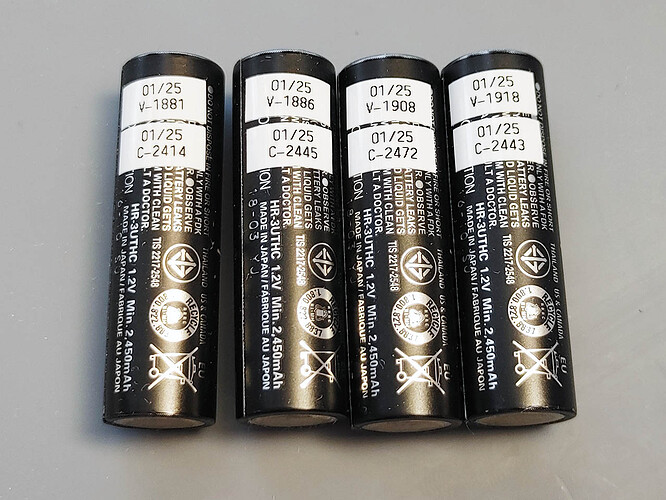I’ve had my trusty Opus C3100 for years, but just picked up a VC8S recently to get some more convenience. Lithium cells seem fine/consistency on both, but I’m getting vastly different NiMH capacity test results on the VC8S versus the C3100. For example the VC8S I started with a capacity test of an older 2450mAh cell and got 1191mAh. I put it in the C3100 and get 1927. Put it back in the VC8S and it’s reporting 1105mAh. Both are doing the charge-discharge-charge single cycles (not Opus refresh mode).
Both chargers appear to be charging up to about 1.5V, and discharging to about 0.85-0.9V (I’m not staring at the screens all day, so I don’t know exactly where they’re terminating).
I’d like to believe the C3100 is correct, but with most of these cells probably going to 10 years of age, I also wouldn’t be surprised if the capacity of these things has degraded well below 2000mAh either. Cycle counts are likely only a few dozen though, so the C3100 is more likely correct.
Lastly, I’m seeing this on all AAA and AA cells I have, even new Eneloop Pros. All slots, and even if I only do one cell.
I’m thinking the VC8S may be defective? Any ideas? It’s powered from a 100W USB-PD power supply, not that any of this should matter on the discharge cycle.
Thanks for any suggestions!
